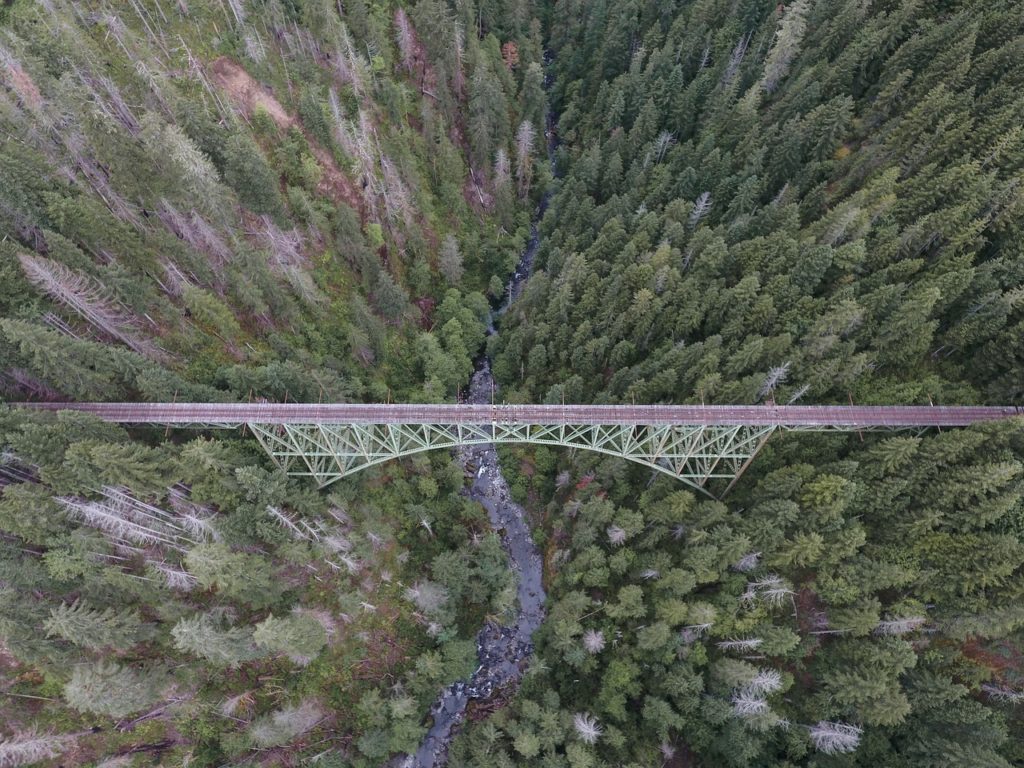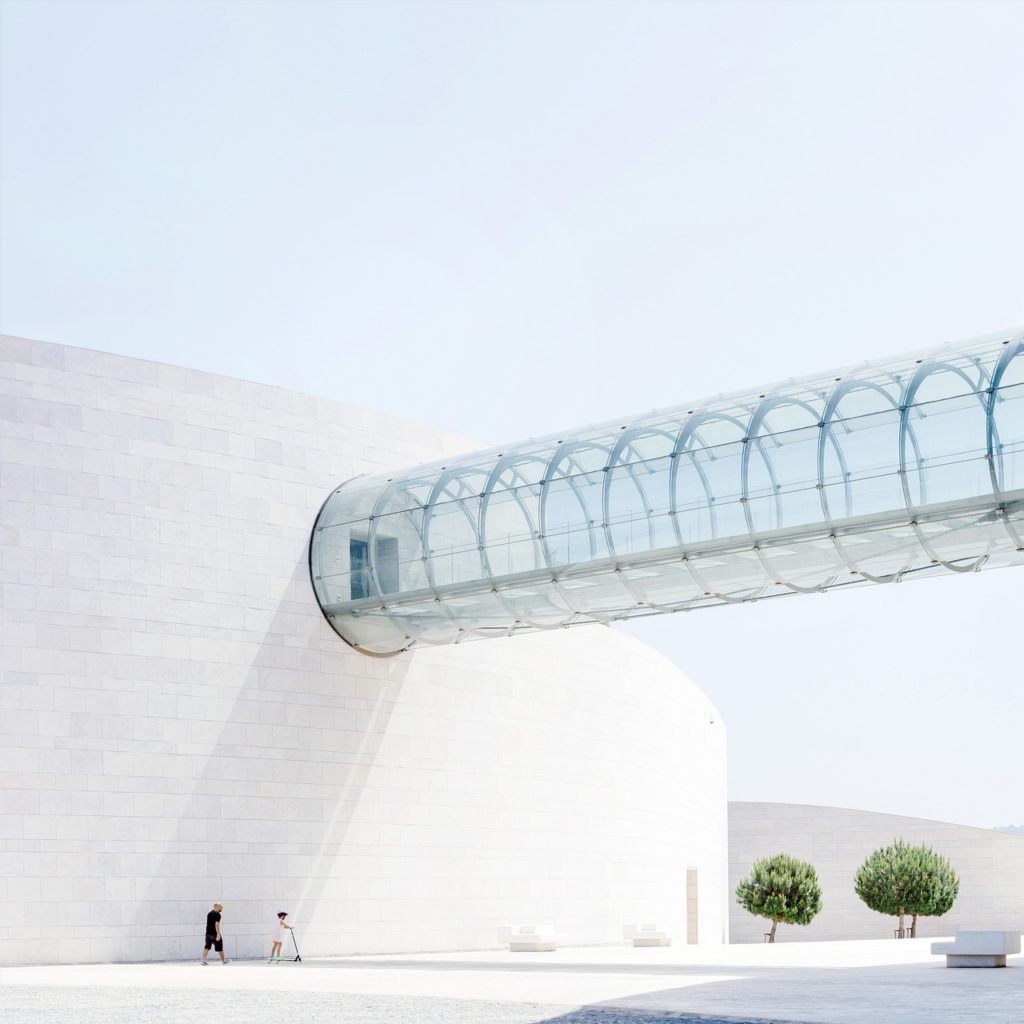In today’s rapidly changing climate, cities are facing the relentless challenges of adapting to the impact of environmental shifts. However, amidst these adversities, a promising solution is emerging – the rise of green infrastructure. With a focus on sustainable practices, cities around the world are harnessing the power of nature to combat climate change. From green roofs and urban forests to rain gardens and permeable pavements, these innovative strategies not only provide environmental benefits but also serve as effective tools in mitigating the impacts of climate change. This article explores the growing trend of green infrastructure and how it is revolutionizing urban landscapes in the face of a changing climate.

Understanding Green Infrastructure
Definition of green infrastructure
Green infrastructure refers to the interconnected network of natural and semi-natural spaces within and around cities that provide multiple environmental, social, and economic benefits. It encompasses a variety of natural and engineered systems, including parks, gardens, street trees, green roofs, rain gardens, and wetlands. Green infrastructure also includes components such as permeable pavements, bioswales, and green walls that aim to mimic and restore ecological functions in urban areas.
Types of green infrastructure
Green infrastructure can take many forms, each with its own unique characteristics and benefits. Urban forestry and green spaces, such as parks and gardens, contribute to improved air quality, biodiversity conservation, and recreational opportunities. Green roofs and walls help reduce energy consumption, mitigate the urban heat island effect, and manage stormwater runoff. Permeable pavements and rain gardens capture and store rainwater, reducing the load on stormwater systems. Bioretention systems and constructed wetlands are designed to treat stormwater and enhance water quality. These different types of green infrastructure can be combined and integrated to create a comprehensive and resilient urban environment.
Benefits of green infrastructure
Green infrastructure offers a wide range of benefits to cities and their residents. It helps mitigate and adapt to climate change by reducing greenhouse gas emissions, mitigating the urban heat island effect, managing stormwater, and protecting against natural disasters. Green infrastructure also improves air and water quality, enhances biodiversity and habitat conservation, and provides recreational and cultural opportunities. Additionally, green infrastructure contributes to human health and well-being by reducing stress, promoting physical activity, and improving mental health. Furthermore, it can boost property values, support local economies, and create jobs in the green sector.
Impact of Climate Change on Cities
Rising temperatures and heatwaves
Cities around the world are experiencing rising temperatures and more frequent and intense heatwaves due to climate change. Heatwaves pose significant health risks, particularly for vulnerable populations such as the elderly, children, and those with pre-existing health conditions. Green infrastructure can help mitigate the urban heat island effect, lower ambient temperatures, and provide cool and shaded spaces for people to seek respite from the heat.
Increased frequency and intensity of storms
Climate change has also led to an increase in the frequency and intensity of storms, including heavy rainfall events. This puts cities at a higher risk of flooding and infrastructure damage. Green infrastructure, such as permeable pavements and rain gardens, can help manage stormwater runoff by capturing and storing rainwater, reducing the strain on stormwater infrastructure and minimizing the risk of flooding.
Sea-level rise and coastal erosion
Coastal cities face the additional challenges of sea-level rise and coastal erosion as a result of climate change. These issues threaten infrastructure, property, and public safety. Constructed wetlands and other green infrastructure solutions can act as natural buffers, helping to protect coastal areas from erosion and flooding while providing additional benefits such as habitat creation and water purification.
Droughts and water scarcity
Climate change also brings about increased risk of droughts and water scarcity in many regions. Green infrastructure, like rain gardens and bioretention systems, can help recharge groundwater supplies, reduce stormwater runoff, and enhance water conservation and efficiency. By capturing and storing rainwater, green infrastructure promotes water availability during dry periods and minimizes the need for costly water importation or desalination.

The Need for Adaptation
Challenges faced by cities
Cities are confronted with numerous challenges when it comes to adapting to climate change. These challenges include limited resources, competing priorities, lack of awareness and knowledge about green infrastructure solutions, and regulatory and bureaucratic barriers. Implementing and maintaining green infrastructure projects can require significant upfront investment, especially for cities with limited financial resources. Additionally, urban planning and development processes often prioritize short-term economic gains over long-term sustainability.
Recognizing the importance of climate resilience
Despite the challenges, cities are increasingly recognizing the importance of building climate resilience and investing in green infrastructure solutions. As climate-related risks continue to intensify, cities have come to understand the need to adapt and become more resilient to both acute and chronic impacts. Green infrastructure provides a cost-effective and multifunctional approach to climate adaptation, offering a host of co-benefits that make cities more livable, sustainable, and resilient in the face of a changing climate.
Costs of inaction
The costs of inaction in the face of climate change can be far-reaching and severe. Without proactive measures and investments in green infrastructure, cities are likely to experience more frequent and severe heatwaves, flooding, and other climate-related hazards. The resulting damage to infrastructure, public health, and ecosystems can have significant economic and social consequences. By investing in green infrastructure and climate adaptation measures, cities can avoid or minimize these costs and build a more resilient future.
Green Infrastructure Solutions
Urban forestry and green spaces
Urban forestry and the creation of green spaces play a crucial role in enhancing the resilience of cities. Trees and vegetation provide shade, improve air quality, reduce energy consumption, and mitigate the urban heat island effect. Strategically planting and maintaining trees and green spaces throughout urban areas can significantly enhance the overall liveability and sustainability of cities.
Green roofs and walls
Green roofs and walls are innovative solutions that bring vegetation and natural elements into urban environments. These installations can help regulate temperatures, improve air quality, and mitigate stormwater runoff. Green roofs provide additional space for recreation, agriculture, and wildlife habitat while reducing energy consumption by insulating buildings and reducing the need for air conditioning.
Permeable pavements and rain gardens
Permeable pavements, such as porous asphalt or interlocking pavers, allow rainwater to infiltrate into the ground instead of running off into storm drains. Rain gardens, on the other hand, are shallow depressions planted with native vegetation that capture and filter stormwater runoff. These green infrastructure features help reduce flooding, improve water quality, and enhance groundwater recharge.
Bioretention systems
Bioretention systems, also known as bioswales or vegetated swales, are designed to capture, treat, and store stormwater runoff. They function as linear strips or shallow basins filled with vegetation and engineered soils that can filter pollutants and recharge groundwater. Bioretention systems effectively manage stormwater while providing ecological benefits and enhancing the aesthetic appeal of urban landscapes.
Constructed wetlands
Constructed wetlands are man-made or restored wetland ecosystems that mimic the natural water purification processes of wetlands. These systems remove pollutants, control flooding, and enhance biodiversity while creating visually appealing landscapes. Constructed wetlands offer significant water management benefits and contribute to the overall resilience of cities.
Green infrastructure incentives and policies
To encourage the widespread adoption of green infrastructure, cities can implement incentives and policies that promote and support its implementation. These may include financial incentives, tax breaks, or zoning regulations that prioritize green infrastructure features in new developments. By creating a supportive policy framework, cities can facilitate the integration of green infrastructure into urban planning and development processes.

Case Studies of Successful Green Infrastructure
City A’s approach and outcomes
City A recognized the need to adapt to climate change and implemented a comprehensive green infrastructure strategy. The city focused on urban forestry, planting trees and creating green spaces throughout the city to mitigate the urban heat island effect and improve air quality. Additionally, City A invested in green roofs and permeable pavements to manage stormwater runoff. Through these efforts, City A successfully reduced temperatures, improved air quality, and enhanced stormwater management, resulting in a more resilient and livable urban environment.
City B’s approach and outcomes
City B took a multifaceted approach to green infrastructure, incorporating various strategies to address climate change impacts. The city implemented a city-wide green roof program, incentivizing property owners to install green roofs through financial incentives and streamlined permitting processes. City B also invested in urban forestry and created an extensive network of parks and green spaces. As a result, the city not only improved air quality, reduced the urban heat island effect, and managed stormwater but also enhanced overall livability and provided recreational opportunities for its residents.
City C’s approach and outcomes
City C faced significant challenges related to sea-level rise and coastal erosion. To address these issues, the city implemented a combination of green infrastructure and nature-based solutions. Constructed wetlands and coastal wetland restoration projects were undertaken to protect coastal areas from erosion, provide habitat for wildlife, and improve water quality. Additionally, City C integrated green roofs and rain gardens into its urban development plans to manage stormwater runoff. These efforts resulted in increased coastal resilience, improved water quality, and enhanced biodiversity conservation.
Benefits of Green Infrastructure
Climate change mitigation
Green infrastructure plays a crucial role in mitigating climate change by reducing greenhouse gas emissions. Trees and vegetation sequester carbon, helping to offset emissions from transportation and energy sectors. Additionally, green infrastructure promotes energy efficiency by providing shading and insulation, reducing the need for air conditioning and heating.
Improved air quality
Green infrastructure contributes to improved air quality by capturing and filtering pollutants. Trees and vegetation remove harmful air pollutants, such as nitrogen dioxide and particulate matter, while also producing oxygen. This helps reduce respiratory illnesses and improve overall public health.
Reduced urban heat island effect
The urban heat island effect, characterized by higher temperatures in built-up areas compared to surrounding rural areas, can be mitigated through green infrastructure. Trees and green spaces provide shade and evaporative cooling, reducing ambient temperatures and providing relief during heatwaves. This helps lower energy consumption for cooling and improves comfort for residents.
Enhanced biodiversity and habitat conservation
Green infrastructure provides habitat and refuge for wildlife, supporting biodiversity conservation in urban environments. By creating interconnected green spaces and restoring natural ecosystems, cities can support plant and animal species that may be displaced by urbanization. This contributes to the overall ecological health and resilience of urban areas.
Stormwater management
Green infrastructure helps manage stormwater runoff by slowing down the flow and capturing rainwater. This reduces the strain on stormwater systems, minimizing the risk of flooding and improving water quality. By retaining and infiltrating stormwater, green infrastructure also contributes to groundwater recharge and protects against droughts and water scarcity.
Health and well-being benefits
Green infrastructure has numerous positive effects on human health and well-being. Access to green spaces and nature has been linked to reductions in stress, improved mental health, and increased physical activity. These benefits are particularly important in urban areas where green spaces may be limited, and the prevalence of mental health issues is higher.
Barriers to Implementation
Lack of funding and resources
One of the major barriers to implementing green infrastructure projects is the lack of funding and resources. Green infrastructure requires upfront investment, which may be challenging for cities with limited budgets. Securing funding from various sources, such as government grants, private partnerships, and community contributions, is essential to overcome this barrier.
Limited knowledge and awareness
Another barrier is the limited knowledge and awareness of green infrastructure solutions among stakeholders, including city officials, developers, and the general public. Education and outreach programs are needed to raise awareness about the benefits and potential applications of green infrastructure. This can include workshops, training sessions, and information campaigns to disseminate knowledge and best practices.
Regulatory and bureaucratic challenges
The existing regulatory and bureaucratic frameworks can impede the implementation of green infrastructure. Outdated codes and regulations may not account for the benefits and performance of green infrastructure solutions. Streamlining the permitting process, updating codes and standards, and incorporating green infrastructure requirements into building and land-use regulations can help overcome these challenges.
Community engagement and participation
Engaging and involving the community in the planning, design, and implementation of green infrastructure projects is crucial for success. However, community engagement can be challenging due to varying levels of interest, knowledge, and social dynamics. Cities need to develop strategies for meaningful community engagement, including public consultations, open forums, and partnerships with community organizations, to ensure that green infrastructure projects meet the needs and aspirations of the community.
Success Factors and Best Practices
Collaboration between city government and stakeholders
Successful implementation of green infrastructure requires collaboration and partnerships between city government, community organizations, developers, and other stakeholders. By working together, cities can leverage diverse expertise and resources to develop comprehensive green infrastructure strategies and projects. Engaging stakeholders throughout the process ensures that projects meet the needs and goals of the community.
Long-term planning and integration into urban development
Integrating green infrastructure into long-term planning and urban development processes is crucial to its success. Green infrastructure solutions should be considered early in the planning stage to ensure their effective integration into the built environment. This includes incorporating green infrastructure requirements into zoning codes, land-use plans, and infrastructure design standards.
Education and outreach programs
Education and outreach programs are essential for raising awareness and promoting the adoption of green infrastructure. These programs can target various audiences, including city officials, developers, community members, and school children. Providing training, workshops, and educational materials about the benefits, design principles, and maintenance of green infrastructure helps build knowledge and capacity among stakeholders.
Monitoring and evaluation of green infrastructure projects
Monitoring and evaluating the performance and effectiveness of green infrastructure projects is critical for their success. This allows cities to learn from past experiences, identify areas for improvement, and demonstrate the benefits of green infrastructure to stakeholders. Monitoring programs can assess factors such as stormwater retention, air quality improvement, and social and economic impacts.
Scaling Up Green Infrastructure
The role of national and international policies
Scaling up green infrastructure requires supportive policies at both national and international levels. National governments can provide financial incentives and regulatory frameworks that encourage the adoption of green infrastructure. International agreements and cooperation can facilitate knowledge sharing, technology transfer, and funding mechanisms to support green infrastructure initiatives.
Funding mechanisms for large-scale projects
Funding large-scale green infrastructure projects can be challenging. However, there are various funding mechanisms available to support such initiatives. These include public-private partnerships, green bonds, impact investments, and crowdfunding. Governments can also allocate dedicated funding for green infrastructure projects through their budgets or establish dedicated funds to support climate adaptation and resilience.
Replication of successful models
Learning from successful green infrastructure projects and replicating their models can accelerate the adoption of green infrastructure. Cities can study and adapt successful initiatives from other cities in similar contexts, taking into account local conditions and community needs. This includes knowledge sharing, networking, and partnerships between cities to exchange best practices and lessons learned.
Partnerships and knowledge sharing
Collaboration, partnerships, and knowledge sharing play a crucial role in scaling up green infrastructure. Cities can partner with organizations, such as non-profits, academic institutions, and research centers, to access expertise, share data, and leverage resources. Platforms for knowledge exchange, such as conferences, workshops, and online forums, can facilitate the sharing of best practices, case studies, and innovative solutions.
Conclusion
The rise of green infrastructure is a testament to cities’ growing recognition of the need to adapt to climate change and build resilience. Green infrastructure offers a holistic approach to climate adaptation, providing a multitude of environmental, social, and economic benefits. Through the implementation of various green infrastructure solutions, cities can mitigate the impacts of climate change, improve air and water quality, enhance biodiversity, and create healthier and more livable urban environments. However, barriers to implementation remain, including funding constraints, limited knowledge and awareness, regulatory challenges, and the need for community engagement. Overcoming these barriers requires collaboration, long-term planning, education and outreach, and the adoption of supportive policies. By scaling up green infrastructure and fostering partnerships and knowledge sharing, cities can create a more sustainable and resilient future for all.



